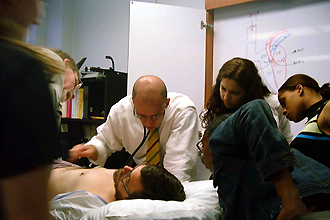Specially trained actors play key role in medical education
When Tulane University School of Medicine developed its standardized patient program more than 20 years ago, it was to better prepare students for their clinical years; now it's become an integral part of medical school education.

“Our standardized patients are highly trained. Some have studied anatomy almost as much as our students have,” says Dr. Elma LeDoux, director of the Tulane Standardized Patient Program. (Photo from Tulane Standardized Patient Program)
The National Board of Medical Examiners now requires that all students not only pass their written licensure examinations but also a structured clinical assessment exam involving several standardized patient encounters.
LeDoux says that Tulane was one of the first centers in the country to formally test students on their clinical skills. Unlike written exams, at the end of the second and third year of medical school, students are tested on how well they interview a patient, conduct the physical exam and display a professional bedside manner. In the past few years, students have become more motivated to do well on these tests to prepare for their similar national exam, she says.
Unlike simulation mannequins, standardized patients actively teach students, assess their exam skills and provide individualized feedback during each encounter. These patient-educators help students understand the importance of compassionate care in addition to proper technique.
“Our goal is to get our students ready to perform as competent and empathetic clinicians,” says LeDoux.
The standardized patient center is used throughout the medical school curriculum. First- and second-year students are introduced to their first experiences with patients, and third-year students use the center to understand the intricacies of neurological and cardiovascular examinations.
Groups outside the Tulane community, such as Xavier University and the University of South Alabama, also utilize the standardized patient facility to teach students important components of clinical care.
